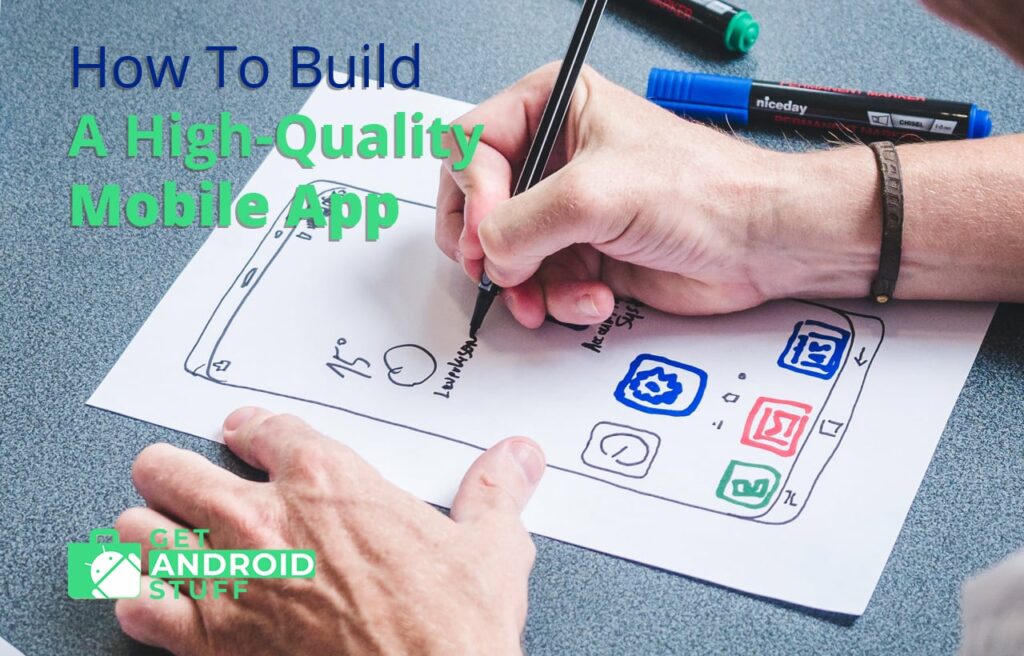How To Build a Low Cost and High-Quality Mobile Application

There are several key steps to building a powerful, high-quality mobile application for Android devices. The demand for sophisticated mobile applications is at an all-time high. Of course, there is an organized procedure to properly design, develop, and deploy a mobile application. As a software developer, this enables you to challenge yourself with a constant learning curve, inspire stakeholder confidence, and deliver a great user experience (UX). Plus, you can showcase your creativity and maximize your earning potential.
To help you get started, read on to learn about how to build a high-quality mobile application for Android devices.
Choose A Programming Language
First and foremost, choose the programming language you will use to write your mobile application for Android. Mastering a programming language is an essential step in the Android development career path. When it comes to mobile app development, some of the most popular frameworks to learn are Kotlin and Java. Of course, both of these languages are compatible with Android and Google. While both options are supported, they have several notable distinctions. For example, Java is one of the most heavily-demanded coding frameworks in the world. At the same time, Java has been supported by Google longer than options like Kotlin. Certainly, select a programming language to build a high-quality mobile application for Android.
Serialize Your Data
Next, serialize the data for your Android mobile application. Data serialization is vital to successfully exchange information with different processors, machines, and architectures. To help you streamline these processes, you should use an advanced tool, such as Protobuf Buffers. This advanced open-source project can extend to a sophisticated platform for serialization. This language-neutral, extensible platform supports many coding languages, such as Dart, Go, C++, and Python. Leveraging these tools, you can model messages in a professional, structured format. Surely, serialize your data to build a high-quality mobile application for Android smartphone devices.
Create Design Mockups
At this point, it is time to begin creating designing mockups for your Android application. Ideally, you will design a solution that is fairly easy to navigate and use. At the same time, your product should be fairly intuitive for stakeholders and prospective users. By generating these sophisticated mockups, you can better visualize how users will interact with your application’s eventual features. Start off by sketching your application out on paper. Include visual breakdowns of screens, layouts, and core functionality. Then, you can move on to building more functional prototypes and wireframes. This way, you can discover potential bugs, errors, issues, or defects early on. Plus, these techniques help you better estimate tech stack requirements, production costs, and development time. Absolutely, create design mockups to effectively build a high-quality mobile application for Android phones.
Establish A Monetization Structure
In addition, choose a monetization structure and strategy for your Android mobile application. You should think about how your application will make money from a very early stage. In many cases, businesses drive profits from in-app upgrades or purchases. These can be to remove advertisements or gain additional functionality. Plus, you can charge users just to download your product from the app store. Otherwise, you can run a complete eCommerce application. By carefully thinking about these steps, you can incorporate these concepts into your brainstorming and interface design. Indeed, establish a monetization structure to build a top-quality Android product from scratch.
Conduct System Testing
Now, you are ready to conduct thorough testing on your Android application. Start off with comprehensive, functional forms of testing. Generally speaking, this includes system integration, regression, and beta acceptance inspection. In addition, you should perform sanity and smoke analyses. Afterward, move on to non-functional system testing procedures. Typically, this involves performance, reliability, and security testing. At the same time, you should also conduct usability, installation, and localization tests. These will help you prevent catastrophic corporate emergencies, inspire stakeholder confidence, and uphold a strong UX. Plus, this will help to preserve organization, efficiency, and productivity.
There are several key steps to building a high-quality mobile application for Android. First off, choose a programming language to write your Android application in. Next, serialize your data with advanced, language-neutral platforms. Then, create some mockups to visually understand your system. This way, you can better conceptualize how your product will look and feel. Plus, this will help you better make the case for design to stakeholders. In addition, establish an effective monetization structure for your application. Now, you are ready to perform in-depth system testing. Follow the points highlighted above to learn about how to build a high-quality mobile application for Android devices.
